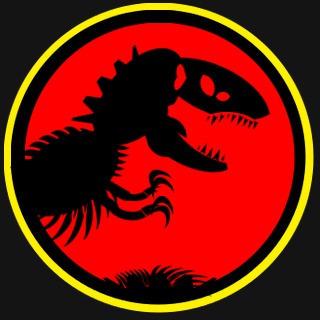Fifty years ago, Gene Roddenberry’s first “wagon train to the stars” began airing on NBC. Star Trek featured a cast of many nationalities, had people of color in important roles, it commented on the social problems of the day disguised in science fiction, and it was the first time we’d seen humanity out in the stars in a ship meant to not only get us to them, but to explore. It was a show about hope for the future, a future that we continue to ape from today with our cellphones, video conferencing communications, and even equipment you can carry around that will tell you the current and future weather conditions.
Was Star Trek perfect? No. Between all the series that they put out from the ’60s, to the reintroduction of the show again with Next Generation in the ’80s, and up through Star Trek Enterprise, there were some episodes that didn’t work, weren’t necessarily poignant, and some that were just not good sci-fi. I’ve seen a number of articles out there listing the great episodes. There are several guides on how to get through the shows as quickly as possible so you get the most for your streaming buck. These guides don’t necessarily go into much detail, though. They list them, but they don’t rate them or give you much info on them. Star Trek Essentials aims to be a little different. I’m going to go over two episodes each week, review them, and talk about what makes them special.
Our first two episodes of Star Trek Essentials cover the pilot episodes, the first that gave Roddenberry another shot at a new pilot, and the next that would end up getting the show greenlit. As a note, I’m not going with broadcast order on these, but rather production order, although for simplicity’s sake I’ve got them listed as they appear on Netflix.
The Cage (Season 1, Episode 0; Pilot)
While the crew won’t be recognizable to anyone familiar with Star Trek, other than Spock, the ship is largely the same as it appears later in the series, and The Cage is a great bit of science fiction in its own right. While investigating a distress call from Talos IV, Captain Christopher Pike of the Starship Enterprise is captured and tested by the Talosians, a race of beings with strong mental capabilities that can create illusions in the minds of those they’ve captured. Looking to make a race of caretakers for them, they begin to test Pike while pairing him with a human, female, crash survivor who ended up on the planet. Pike is more than resistant, and while the crew attempts to save their Captain, the ship seems to be under Talosian control.
The initial crew of the ship is vastly different from what we get in the main series. Leonard Nimoy as Spock being the only holdover. Although in a different role entirely, Majel Barret is a part of this as well. This episode was actually filmed in 1964 and wouldn’t see the light of day as its own episode again until the ’80s. It was split up in footage used in a two-part episode of the first season of the show as The Menagerie Parts 1 and 2. I’ve never been fond of that two-parter, but I really did enjoy this when I first saw it almost 30 years ago. It’s definitely a more sci-fi take on it, and probably the only reason the network rejected it was that it didn’t end in a fist fight, and was too cerebral. They may have been right, but it’s a neat look at what might have been, and is a really decent episode of the show in its own right.
Where No Man Has Gone Before (Season 1, Episode 3; Pilot 2)
The third aired episode of Star Trek was actually its second pilot. We have most of the mainstays here with Kirk and Spock, but McCoy and Uhura hadn’t been cast yet, so we have a different doctor and communications officer. The Enterprise is exploring the outer limits of our galaxy when they encounter a buoy left over from the Valiant, a ship that had tried to cross the galactic barrier before. There were some problems on board with the ship after it had contacted the barrier, but Kirk feels that they need to know, and press onward. The ship interacting with the barrier blows out their power and kills 9 crewman as well as altering Kirk’s friend from the academy, Gary Mitchell. Mitchell is showing increasing abilities beyond what any one person could have, and Spock finds out the Valiant had similar issues. With the ship’s power limited, and their only hope an unmanned mining station to replace their damaged components, Kirk’s faced with the decision to leave one of his best friends marooned on a planet so he won’t pose a threat to the ship or its crew.
While not as cerebral as the original pilot, Where No Man Has Gone Before still packs in quite a bit of standard sci-fi. The godlike powers and power corrupting is a theme that will continue to come up with Star Trek all the way through Enterprise. They play well with Kirk’s problem here, and it sets up a lot of the storytelling we end up seeing on the show throughout. There’s more effects shots, and we get a lot more of the ship’s layout squared away. Spock is a bit closer to the stoic, and more subtle, sassy Vulcan we’ll get as the series moves on as well. Overall, the episode moves a bit better than the original pilot, and the network executives got their fist fight to end the show with. While it ultimately ended up as the third episode aired into the first season, this one lays a lot of the groundwork that would set-up the formula for later episodes, and is definitely worth the watch.

Born the same year as Star Wars, it seems Ashe was destined to be into films with big impacts, explosions, and laser swords. With a love for sci-fi and horror, Ashe has a thing for games of both the tabletop and video variety. He is living a charmed, married life of sixteen years, along with several cats, a dog, and a bearded dragon. Ashe currently writes for Diehard Gamefan, covering video and tabletop games since 2008. Starting with Cinefessions just a few years ago, he has decided to tackle one of his original passions: film.


